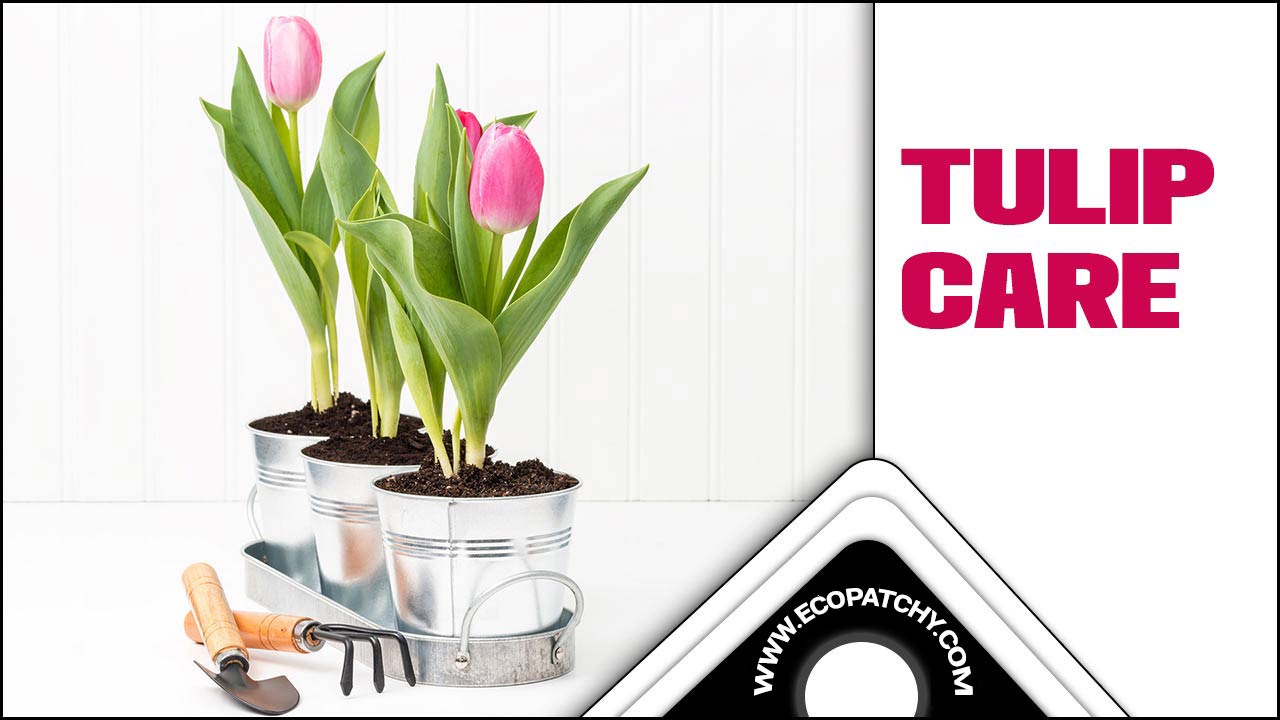Amaryllis plants are a true delight to grow, with their stunning blooms and easy-to-care-for nature. But if you’re new to growing amaryllis, you may have questions about how to best care for them.
Here, we’ll dive into everything you need to know about growing and caring for amaryllis plants. From choosing the right bulbs and planting techniques to providing adequate sunlight and temperature, we’ll cover all the essential care tips to help your amaryllis thrive.
We’ll also discuss the importance of these plants, how to fertilize and support them, and how to manage pests and diseases. By following these tips, you’ll be well on your way to successfully cultivating beautiful amaryllis plants.

Importance Of Amaryllis Plants
Amaryllis plants are highly valued for their vibrant and stunning blooms, making them a sought-after choice for indoor and outdoor spaces. Their popularity among gardeners is due to their ease of care, making them particularly suitable for beginners.
With proper attention, amaryllis plants can bloom multiple times throughout the year, adding beauty and color to any environment. Additionally, these plants possess air-purifying qualities, enhancing the air quality in your home or office. Amaryllis plants come in various colors and sizes, making them a versatile option tailored to suit any space.
Choosing The Right Amaryllis Bulbs
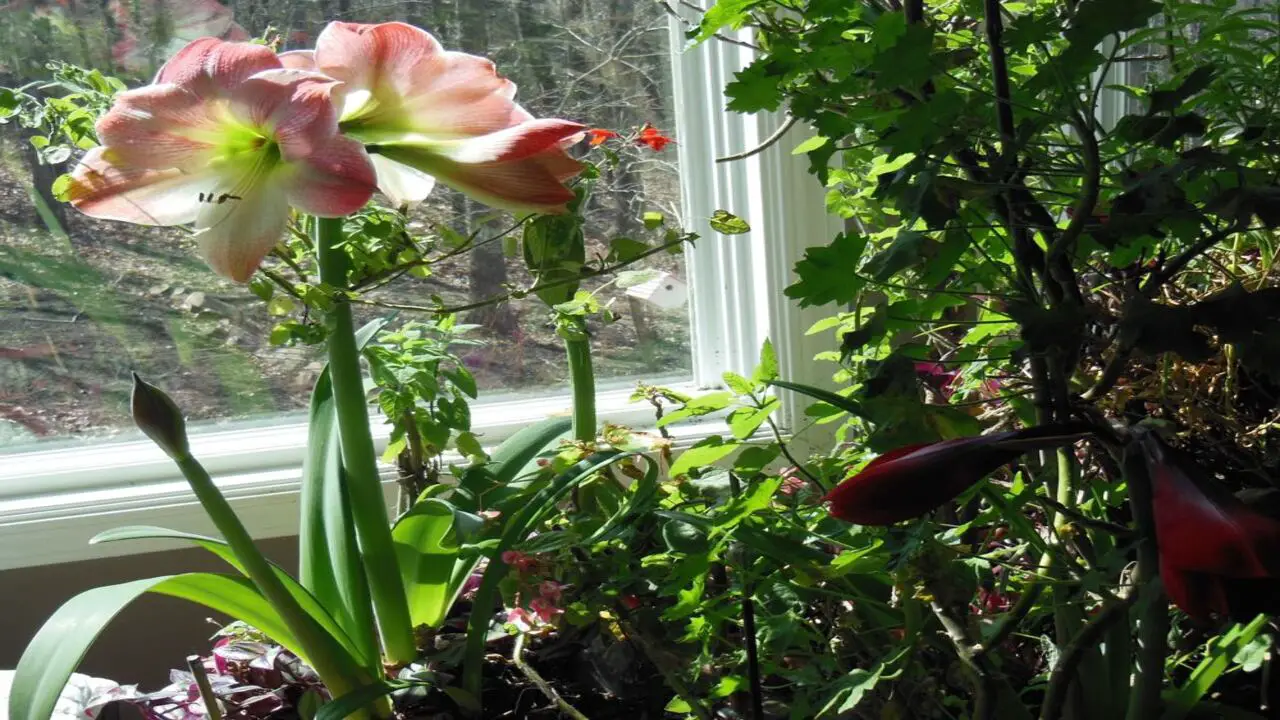
Choosing the right amaryllis bulbs is important in growing and caring for these beautiful plants. By taking the time to choose high-quality bulbs, you can set yourself up for success in growing vibrant and stunning amaryllis plants. Here are some factors to consider when selecting your bulbs:
- Size: Look for bulbs that are large and firm. Avoid bulbs that feel soft or squishy, as this may indicate rot or disease.
- Color: Amaryllis bulbs come in various colors, so choose one that suits your preferences. Keep in mind that darker-coloured varieties tend to be more expensive.
- Variety: There are many different types of amaryllis, each with unique characteristics—research different varieties to find one that fits your desired bloom time, size, and appearance.
- Health: Inspect the bulbs for any signs of damage or disease. Look for mold, blemishes, or dryness. Healthy bulbs should be plump and have no visible signs of decay.
Essential 7 Care Tips For Growing And Caring For Amaryllis Plants

Growing and caring for amaryllis plants can be a rewarding and enjoyable experience. These stunning flowers are known for their vibrant colors and elegant blooms, making them popular for indoor and outdoor gardens. To ensure the health and longevity of your amaryllis plants, it is crucial to follow seven essential care tips.
1.Planting And Potting Amaryllis Bulbs
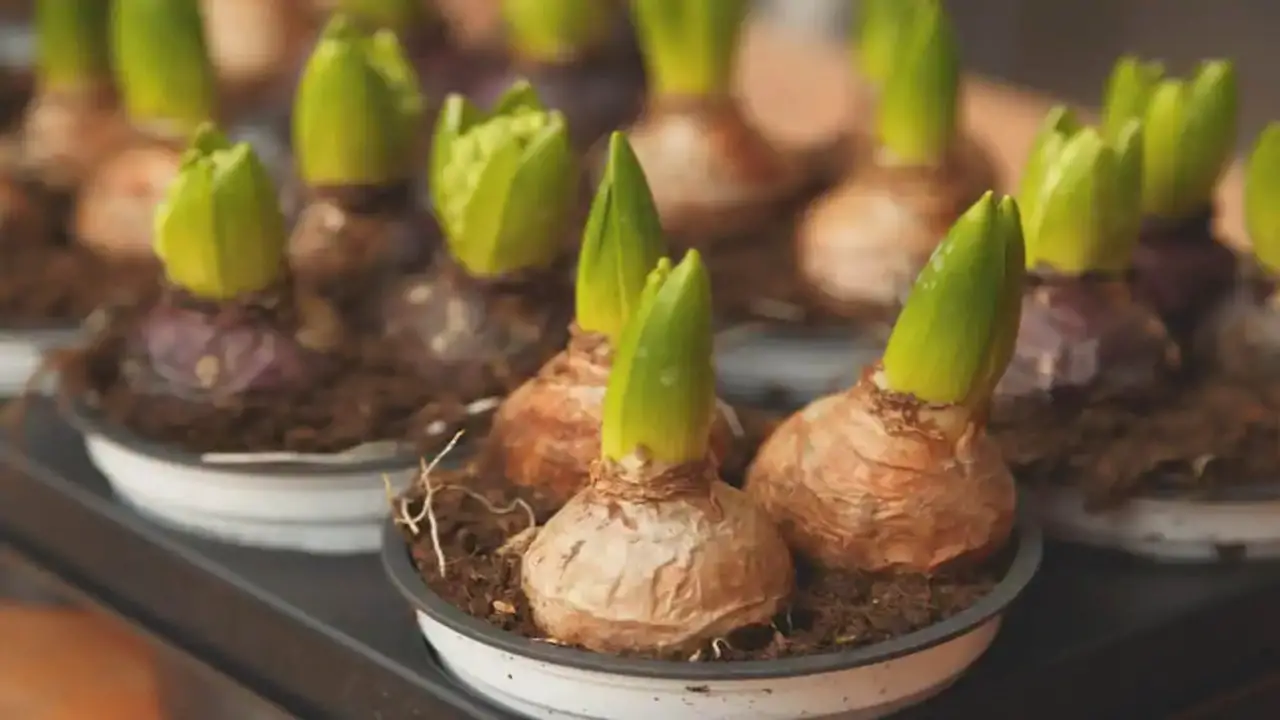
When planting and potting amaryllis bulbs, it’s essential to ensure they are in well-draining soil to prevent waterlogging and root rot. Make sure to plant the bulbs with the top third exposed above the soil line for proper growth.
Use a pot with enough space for root development and drainage holes to prevent excess moisture. While you can also plant amaryllis bulbs directly in garden beds, adequate drainage is crucial. For the best results, follow the specific planting instructions provided with the bulbs. By taking these steps, you can ensure successful growth and vibrant blooms for your amaryllis plants.
2.Proper Watering And Drainage Techniques
To ensure the proper growth and health of your amaryllis plants, following proper watering and drainage techniques is essential. Water your amaryllis plants thoroughly when the top soil feels dry. However, allowing excess water to drain from the pot or garden bed is important to prevent waterlogging, which can lead to root rot and other diseases.
During the dormant period, reduce watering and allow the soil to dry out between waterings. Also, make sure to use room-temperature water to avoid shocking the roots of the amaryllis plant. By following these techniques, you can ensure your amaryllis plants’ optimal care and growth.
3.Providing Adequate Sunlight And Temperature
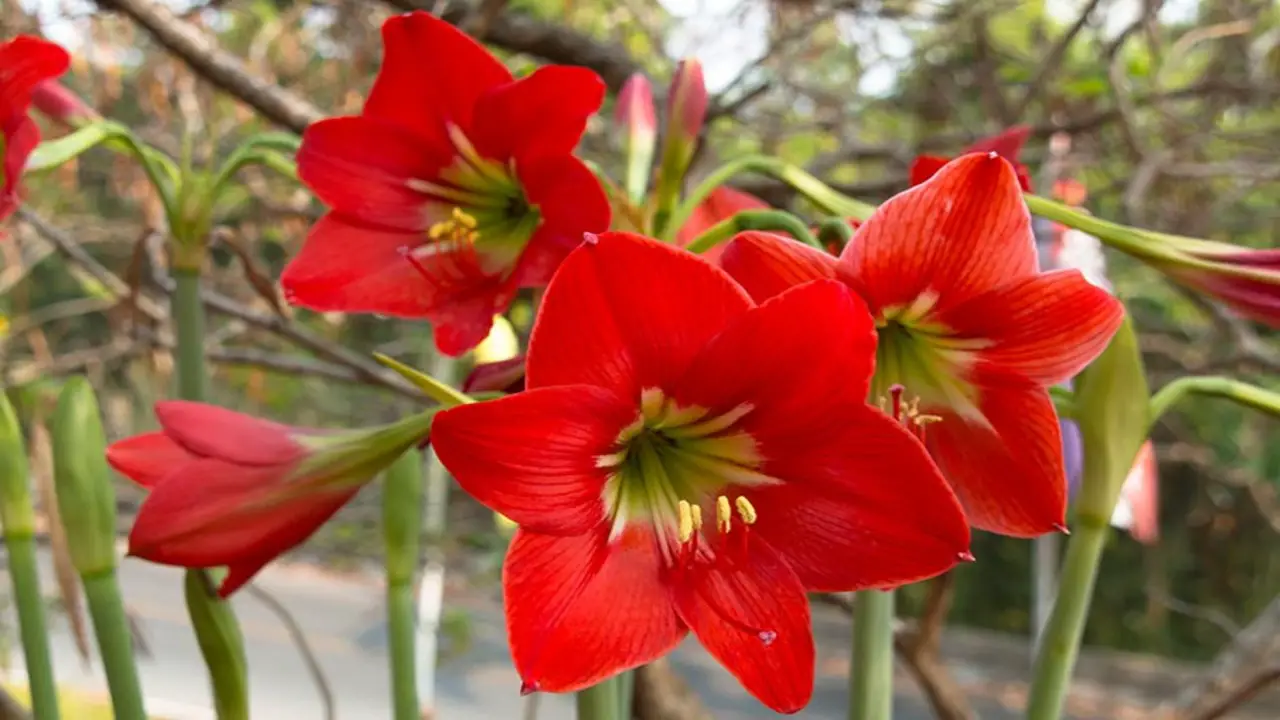
Place amaryllis plants in a bright location with indirect sunlight to ensure optimal growth. Avoid exposing them directly to the sun as it can lead to leaf burn. For best results, provide a warm environment with temperatures ranging between 65-75°F (18-24°C).
If you want to extend the bloom time, consider placing them in cooler areas with temperatures around 55-60°F (13-15°C). Since amaryllis plants are sensitive to low temperatures, protect them from frost and cold drafts. Following these guidelines can create an ideal setting for your amaryllis plants to thrive.
4.Fertilizing And Nutrient Requirements
To ensure optimal growth and bloom production, providing amaryllis plants with the right balance of nutrients is important. Use a balanced indoor plant fertilizer that contains essential nutrients for the plants. Follow the package instructions and apply the fertilizer every 2-4 weeks during the growing season.
During the dormant period, reduce or stop fertilizing as the plant’s nutrient needs decrease. Be cautious not to overfertilize, as this can result in excessive foliage growth at the expense of blooms. Regularly inspect the plant for any nutrient deficiencies to maintain healthy growth and adjust the fertilization accordingly.
5.Supporting And Staking Amaryllis Stems
As amaryllis plants grow, it is important to support their tall stems to prevent bending or breaking. To do this, use stakes or plant supports that can be placed next to the stem. Gently tie the stem to the support using soft string or plant ties.
Adjusting the support as the stem grows taller is necessary to ensure continuous stability. By offering proper support, you can keep the flowers of amaryllis plants upright and prevent any damage. It’s essential to take care of the stems to enjoy the stunning blooms of these beautiful plants.
6.Managing Pests And Diseases
Regular inspections are essential to keep amaryllis plants healthy and pest-free. Look for common pests like aphids, mealybugs, and spider mites, which can quickly infest the plants. If an infestation occurs, promptly treat it with appropriate organic or chemical controls.
Good air circulation is crucial in preventing fungal diseases, so ensure adequate ventilation around the plants. Overwatering should be avoided, as it can lead to root rot and soil-borne diseases. Remove any infected or damaged foliage to prevent the spread of diseases. By following these practices, you can effectively manage pests and diseases that may affect your amaryllis plants.
7.Pruning And Deadheading Amaryllis Flowers
To ensure your amaryllis plants’ continued growth and health, it’s important to prune and deadhead the flowers. Removing the faded blooms encourages new growth and prevents the plant from expending energy on seed formation.
When deadheading, cut the flower stalk near the base of the plant, being careful not to damage the leaves. Remove any yellow or withered foliage to maintain the plant’s appearance. After the foliage turns yellow and dies back naturally, consider pruning it back. This redirects energy to the bulb for the next blooming season, ensuring a beautiful display of amaryllis blooms.
Tips For Successfully Cultivating Amaryllis Plants
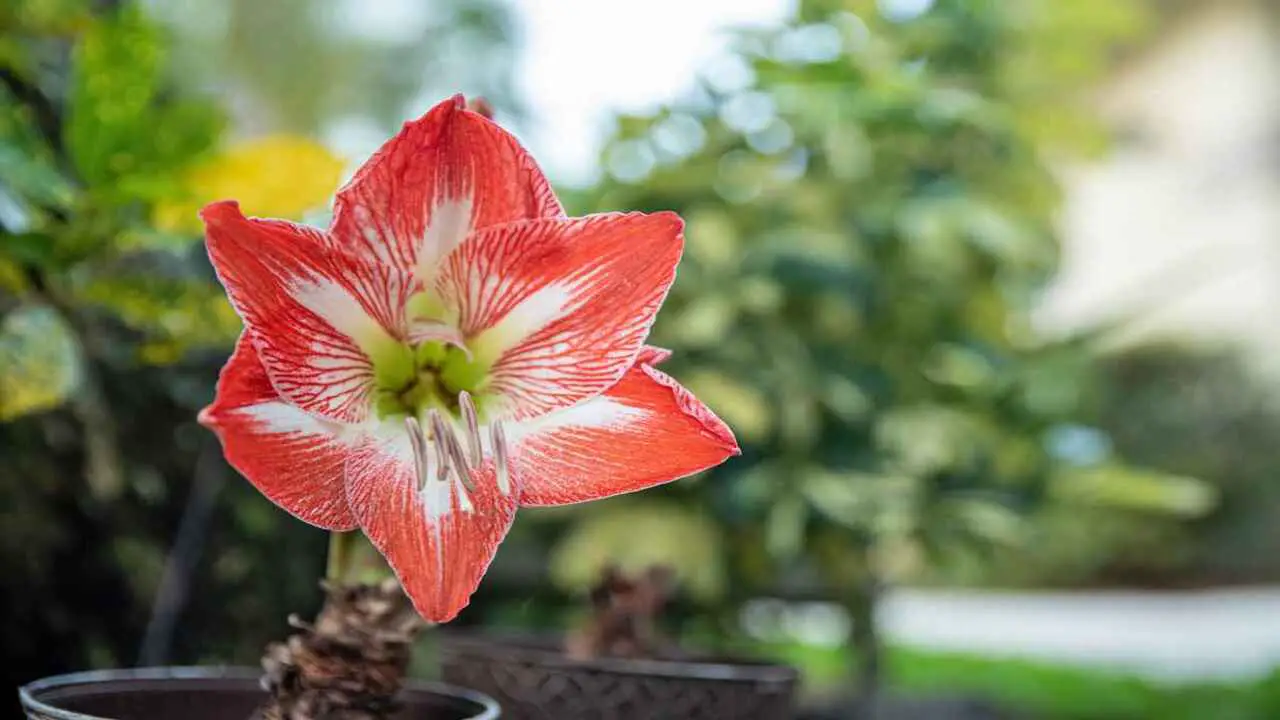
To successfully cultivate amaryllis plants, it is important to choose a sunny location for optimal growth. By following these tips, you can successfully cultivate and care for your amaryllis plants, enjoying their vibrant blooms year after year.
- Choose A Healthy Bulb: When selecting an amaryllis bulb, choose one that is large, firm, and free from any signs of damage or disease.
- Plant In Well-Draining Soil: Amaryllis plants prefer well-draining soil to prevent waterlogging and root rot. Use a potting mix specifically formulated for bulbs or a mixture of equal parts potting soil, perlite, and sand.
- Provide Adequate Sunlight: Amaryllis plants require bright, indirect sunlight to thrive. Please place them in a location that receives at least 6 hours of sunlight daily.
- Water Sparingly: Overwatering can lead to root rot, so watering amaryllis plants is important. Allow the top inch of soil to dry out between waterings and be cautious not to let the plant sit in standing water.
- Support Tall Stems: As amaryllis plants grow, their tall stems may require support to prevent them from toppling over. Use stakes or supports to keep the stems upright.
- Fertilize Regularly: To promote healthy growth and abundant blooms, fertilize amaryllis plants every 2-3 weeks with a balanced fertilizer specifically designed for flowering plants.
By following these tips, you can successfully cultivate and care for your amaryllis plants, enjoying their vibrant blooms year after year.
Conclusion
Growing and caring for amaryllis plants can be a rewarding experience. By following essential care tips, choosing the right bulbs, providing proper watering and sunlight, and managing pests and diseases, you can ensure the health and vitality of your amaryllis plants.
Additionally, supporting and staking the stems, fertilizing them, and pruning and deadheading the flowers will help promote growth and longevity. Amaryllis plants are beautiful and hold great importance in enhancing the aesthetic appeal of any space.
So, whether you’re a seasoned gardener or a beginner, with the right knowledge and care, you can successfully cultivate and enjoy the beauty of amaryllis plants in your home or garden.
Frequently Asked Questions
1.When Should I Bring My Amaryllis Out Of The Dark?
Ans: Keep amaryllis bulbs in a cool, dark place for 8 to 10 weeks to encourage blooming. After this period, bring them into a warm, bright location with indirect sunlight. Water sparingly until growth appears, then gradually increase watering. Once bloomed, water regularly and fertilize every few weeks.
2.How Do You Winterize An Amaryllis?
Ans: To winterize an amaryllis, stop watering the bulb in the fall to allow it to dormant. After the foliage has started to yellow and die back, cut it back to about 2 inches above the bulb. Store the bulb in a cool, dark, and dry place for 8-10 weeks. Then, repot the bulb and resume watering to encourage growth.
3.What Do You Do With An Amaryllis Bulb After It Has Bloomed?
Ans: After an amaryllis bulb has bloomed, remove the spent flower stalks. Keep watering and fertilizing until the leaves turn yellow. Gradually reduce watering until the leaves die back completely. Store the bulb in a cool, dark place for several weeks before repotting or planting outdoors.
4.How Do I Get Amaryllis To Rebloom?
Ans: Remove the flower stalk after it has finished blooming to encourage amaryllis to rebloom. Keep watering and fertilizing until the leaves turn yellow and die back naturally. Then, place the pot in a cool, dark location for 8-12 weeks. Afterward, repot the bulb in fresh soil and resume watering for new growth and blooms.
5.How Long Can Amaryllis Live?
Ans: Amaryllis plants can thrive for many years with proper care. They can bloom for up to 75 years, with each season producing more flowers as the bulb grows. Their growth cycle can be continued by keeping the bulbs dormant and repotting them.



